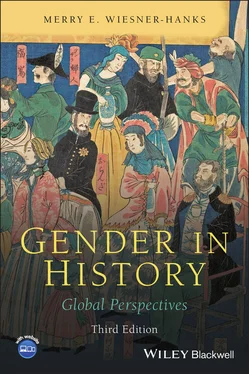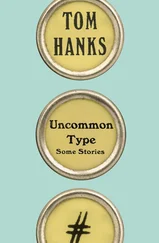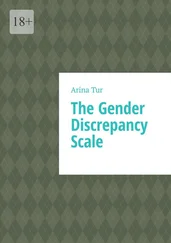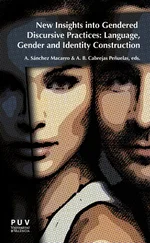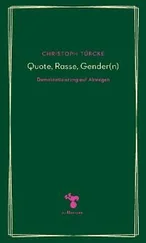1 ...7 8 9 11 12 13 ...20 Elizabeth A. Clark, History, Theory, Text: Historians and the Linguistic Turn (Cambridge, MA: Harvard University Press, 2004) offers a broad survey of debates about the linguistic turn. On the spatial turn, see: Jo Guldi, “What Is the Spatial Turn?” at Spatial Humanities: A Project of the Institute for Enabling Geospatial Scholarship, University of Virginia Library, http://spatial.scholarslab.org/spatial-turn. On the emotional turn, see Barbara H. Rosenwein and Riccardo Cristiani, What Is the History of the Emotions? (London: Polity, 2018). On the material turn, see: “ AHR Conversation: Historians and the Study of Material Culture,” with Leora Auslander, Amy Bentley, Leor Halevi, H. Otto Sibum, and Christopher Witmore, AHR , 114:5 (2009), 1355–404.
For queer theory, good places to begin are Riki Wilchens, Queer Theory, Gender Theory: An Instant Primer (New York: Alyson Books, 2004), which incorporates the author’s experiences as an activist, or Hannah McGann and Whitney Monaghan, Queer Theory Now: Foundations and Futures (London: Red Globe Press, 2020), designed for students. For analyses of the development of queer theory, see the special issue of The GLQ Forum , “Thinking Sex/Thinking Gender,” 10:2 (2004), 211–313.
On critical race theory, see Richard Delgado and Jean Stefancic, Critical Race Theory: An Introduction (3rd edn., New York: NYU Press, 2017). Robert J. C. Young, Postcolonialism: A Very Short Introduction (Oxford: Oxford University Press, 2003) and Ania Loomba, Colonialism/Postcolonialism (3rd edn., London: Routledge, 2015) both provide good introductory surveys of the main ideas in postcolonial theory. A solid introduction to Antonio Gramsci’s notion of hegemony is Joseph V. Femia, Gramsci’s Political Thought: Hegemony, Consciousness and the Revolutionary Process (Oxford: Clarendon Press, 1981).
The best introduction to critical race feminism is provided in two books edited by Adrien Katherine Wing, Critical Race Feminism: A Reader (2nd edn., New York: New York University Press, 2003) and Global Critical Race Feminism: An International Reader (New York: New York University Press, 2000). On feminist postcolonial theory, see Chandra Talpade Mohanty, Feminism without Borders: Decolonizing Theory, Practicing Solidarity (Durham, NC: Duke University Press, 2003); Reina Lewis and Sarah Mills, Feminist Postcolonial Theory: A Reader (London: Routledge, 2003); Margaret A. McLaren, ed., Decolonizing Feminism: Transnational Feminism and Globalization (London: Rowman and Littlefield, 2017). The interdisciplinary journal Meridians: Feminism, Race, Transnationalism , which began publication in 2000, is the best place to see the newest directions in global feminist scholarship.
The development of women’s and gender history as a field has been examined in Laura Lee Downs, Writing Gender History (2nd edn., London: Hodder/Arnold, 2010) and Sonya O. Rose, What Is Gender History? (London: Polity, 2010). Judith M. Bennett, History Matters: Patriarchy and the Challenge of Feminism (Philadelphia, PA: University of Pennsylvania Press, 2006) analyzes trends in women’s and gender history over the past several decades and calls for historicizing the study of patriarchy. Kathleen Canning, Gender History in Practice: Historical Perspectives on Bodies, Class, and Citizenship (Ithaca, NY: Cornell University Press, 2006) and Oliver Janz and Daniel Schönpflug, eds., Gender History in a Transnational Perspective: Networks, Biographies, Gender Orders (London: Berghahn Books, 2014) look at the impact of gender history.
For a survey of trends in women’s and gender history around the world, see Leonore Davidoff, Keith McClelland, and Eleni Varikas, eds., Gender and History: Retrospect and Prospect (Malden, MA: Blackwell, 2000). For a collection of the writings of feminist historians, see Sue Morgan, ed., The Feminist History Reader (New York: Routledge, 2006).
The Instructor’s Companion site for this book has more suggested readings, plus many links to original sources, and can be found here: www.wiley.com/go/wiesner-hanks/genderinhistory3e
1 1Joan Scott, “Gender: A Useful Category of Historical Analysis,” American Historical Review, 91:5 (1986), 1053–75; citation 1067.
2 2In Barbara Smith, ed., Home Girls: A Black Feminist Anthology (New Brunswick, NJ: Rutgers University Press, 1983), pp. 264–74; citation 264.
3 3Lynn Hunt, Writing History in the Global Era (New York: Norton, 2015), p. 39.
CHAPTER TWO Ideas, Ideals, Norms, and Laws
Difference has been a key concept in gender history over the past decades. Historians have emphasized that women’s experiences differed because of class, race, nationality, ethnicity, religion, and other factors, and they varied over time. Every key aspect of gender relations – the relationship between the family and the state, the relationship between gender and sexuality, and so on – is historically and culturally specific. Today historians of masculinity speak of their subject only in plurals, as “multiple masculinities” appear to have emerged everywhere, just as have multiple sexualities in the works by historians of sexuality.
Despite this variety, certain ideas that are similar to one another have emerged in a wide variety of cultures, and have come to shape many aspects of life. This is not to say that these concepts were the same everywhere or that they did not change over time, but that there were significant parallels and continuities across time and space that can be compared. This chapter explores the ways these concepts developed and how they shaped the informal norms and more formalized laws regulating people’s lives. It looks at five areas: ideas about the nature and proper roles of men and women, what is often termed masculinity and femininity or manhood and womanhood; binaries related to male/female binaries, including nature/culture, public/private, inner/outer, order/disorder, rational/passionate; ideas, norms, and laws regarding motherhood and fatherhood; ideas and laws prescribing male dominance and female subservience and dependence; ideas and laws promoting gender egalitarianism.
In many ways, the topics covered in this chapter are the easiest ones to research when looking at gender, at least for those cultures that had written records. Among the earliest of the world’s written records, whether in Mesopotamia, Egypt, China, or elsewhere, were laws specifying how husbands and wives were to treat each other, religious literature setting out the proper conduct for men and women, or stories and myths that described relations between men and women, or gods and goddesses. Slightly later came more formal considerations of the nature of women and men, and speculations – couched in the language of religion, medicine, or philosophy – about the reasons for the differences between them. Early visual sources also provide extensive evidence about ideals and norms, as the individuals depicted often represented idealized heroes, gods, and goddesses rather than actual men and women. Because of the relative availability of materials, much of the earliest work in women’s history focused on ideas about women or laws regarding women, and for some of the world’s early cultures this is as far as the written historical record can take us. The code of the Babylonian king Hammurabi, for example, dating from roughly 1750 BCE, includes many laws that regulate marriage and divorce, but we have no way of knowing the extent to which these were enforced, or the degree to which, as is common with law codes, they were only selectively enforced.
Читать дальше
